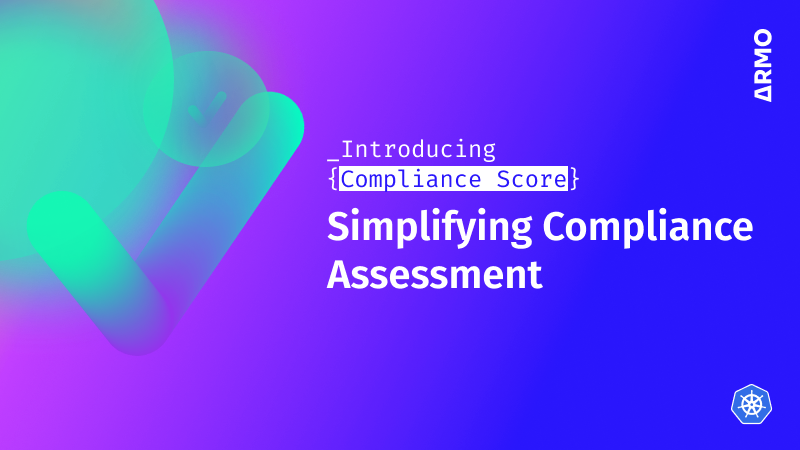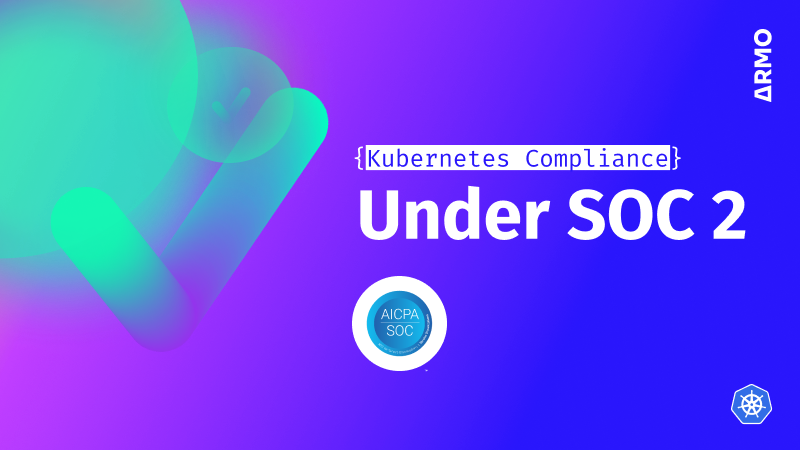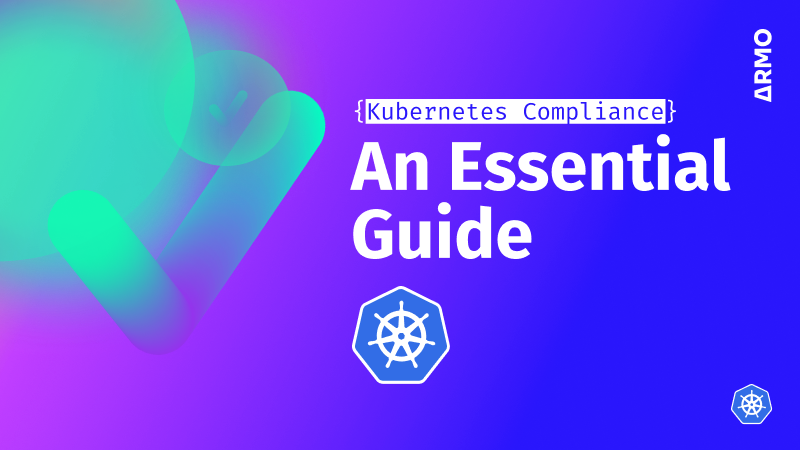Introducing Compliance Score: simplifying compliance assessment
Improve Kubernetes compliance with ARMO Platform's user-friendly Compliance Score for enhanced security. Click here to...

Jun 15, 2023
Kubernetes has gained significant popularity as a cloud platform for managing and orchestrating containerized applications. However, companies today must ensure that their Kubernetes environments are secure and comply with international standards.
In this blog post, we will explore the topic of Kubernetes compliance under ISO 27001, one of the world’s most widely recognized information security standards.
ISO 27001 is an international security standard that offers organizations a systematic approach to handling sensitive data. Its guidelines help organizations of all sizes and types identify and manage information security risks and ensure the confidentiality, integrity, and availability of their data assets.
While organizations have to meet certain requirements to receive ISO 27001 certification, the framework is adaptable to a company’s specific needs.
ISO 27001 requires a risk-based approach to security. This entails identifying and assessing threats to data assets and then implementing controls to counter those risks. Organizations can thus prioritize their security efforts and allocate resources effectively.
There are many benefits to ISO 27001 compliance. It can improve risk management, protect against cyber threats, and demonstrate to clients, partners, and regulators a commitment to data security. Adhering to the standard also helps address weaknesses in security practices.
Kubernetes provides some powerful features for managing and securing sensitive workloads, such as Kubernetes role-based access control (RBAC), network policies, and container security contexts. However, it is still essential for companies to harden and secure their Kubernetes environment itself. This involves implementing best practices for securing the Kubernetes control plane, including limiting access to the Kubernetes API server, using secure network communication protocols, and monitoring Kubernetes clusters for breaches.
One crucial consideration is the attack surface. As a complex distributed system, Kubernetes presents numerous potential attack vectors that must be addressed to comply with ISO 27001. These may be misconfigured Kubernetes resources, insecure container images, or vulnerabilities in the underlying infrastructure.
By taking a proactive approach to Kubernetes security, businesses can ensure they are able to meet the requirements of ISO 27001 to properly protect their sensitive data and applications.
In this section, we will cover the relevant clauses of ISO 27001, discussing the specific challenges and considerations for securing Kubernetes clusters per the ISO 27001 standard. The first three clauses—namely “Scope,” “Normative references,” and “Terms and definitions”—explain the details of the ISO 27001 standard. Thus, for the purpose of Kubernetes compliance, we will start from the fourth section.
Organizations must first identify the assets they need to protect and the risks they have to manage. In this section, businesses should define the scope of their Kubernetes environment and establish information security objectives and policies. For example, the former can be determined by identifying the namespaces, clusters, and nodes that are part of the Kubernetes platform.
Leadership is critical in promoting information security. Decision-makers must assign responsibility for the security management of Kubernetes clusters and infrastructure; they must also ensure this is integrated into their overall business strategy, including by providing sufficient resources and support to their security teams.
The risk assessment phase should identify the assets, vulnerabilities, and threats associated with the Kubernetes environment. The risk mitigation plan should outline the controls that will be implemented to manage these risks, such as RBAC, network policies, and secure coding practices.
Businesses must provide appropriate resources, training, and awareness related to Kubernetes security; this may take the form of teaching developers and administrators Kubernetes security best practices and Kubernetes-native features. Companies should also provide resources such as tools and documentation to help developers and administrators implement security controls in their Kubernetes clusters.
Kubernetes is a relatively new technology, and there is currently a talent gap in terms of people who are skilled in its use. Implementing information security controls, such as incident management, change management, and backup and recovery processes in ephemeral and dynamic Kubernetes environments, can be challenging. Businesses must adapt to these requirements to ensure their Kubernetes clusters remain secure.
Companies need to monitor and evaluate the security performance of their Kubernetes infrastructure. Organizations can implement this using metrics and audits to measure their security controls’ effectiveness and identify areas in need of improvement.
Continuous improvement is critical for maintaining the security of the Kubernetes landscape. Businesses must take corrective actions, adjust risk treatment plans, and provide security awareness programs.
The Kubernetes ecosystem offers several security features and tools to meet the requirements of ISO 27001:
By leveraging these features and tools, businesses can enhance the security of their Kubernetes environments and ensure they achieve ISO 27001 compliance. However, it is essential to note that these tools should be part of a comprehensive security strategy that includes risk assessments, security policies, and ongoing monitoring and auditing of their Kubernetes clusters.
In the next section, we will review a few best practices to help companies keep their strategy tight.
There are widely accepted best practices in the industry to help organizations comply with ISO 27001.
Businesses must have a clear and comprehensive security policy in place. This should detail the organization’s approach to managing information security risks in its Kubernetes landscape, including the roles and responsibilities of all stakeholders.
These ensure that only authorized users gain access to sensitive data in a Kubernetes environment. Businesses should implement role-based access control (RBAC) to restrict permissions to Kubernetes resources and enforce the principle of least privilege.
Kubernetes provides a range of network security measures that organizations can use to protect sensitive data, including network policies and secure network plugins. Network policies enable businesses to define how pods communicate with each other and external resources, while secure network plugins encrypt network traffic to prevent data interception and theft.
Encryption is an essential tool for protecting sensitive data in Kubernetes clusters. Via tools such as Transport Layer Security (TLS) and encrypted storage volumes, companies should encrypt their data to protect it at rest and in transit.
Kubernetes is a rapidly evolving technology, so businesses must be up-to-date with recent best practices to maintain ISO 27001 compliance. This requires keeping current on emerging threats and vulnerabilities, promptly implementing patches and updates, and adopting new security measures and controls.
By following these best practices, businesses can adhere to ISO 27001 for their Kubernetes environments, ensuring that sensitive data is protected and information security risks are managed effectively.
As a widely recognized international standard for information security management, ISO 27001 provides a framework for businesses to manage data security risks and protect sensitive information. Kubernetes is also an excellent tool for managing and securing sensitive workloads and can help organizations meet the requirements of ISO 27001.
Businesses should implement best practices and utilize the features of Kubernetes and tools of the cloud-native ecosystem as much as possible. By aligning their Kubernetes cluster configuration and management with the guidelines of ISO 27001, companies can achieve compliance and protect their sensitive data from being compromised.

The only runtime-driven, open-source first, cloud security platform:
Continuously minimizes cloud attack surface
Secures your registries, clusters and images
Protects your on-prem and cloud workloads

Improve Kubernetes compliance with ARMO Platform's user-friendly Compliance Score for enhanced security. Click here to...

This post discusses the five Trust Services Criteria (TSC) of SOC 2 and how they...

Learn about Kubernetes compliance challenges, consequences of non-compliance, and get guidance on maintaining a secure...